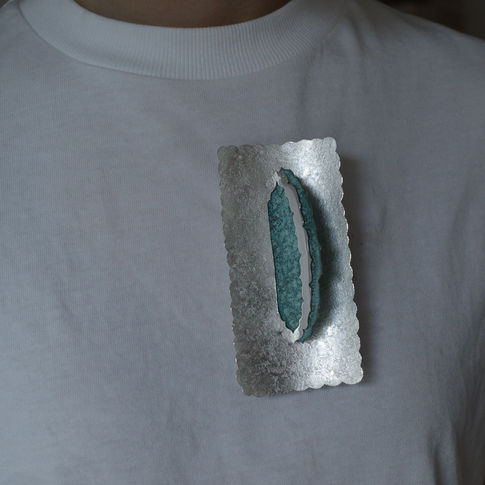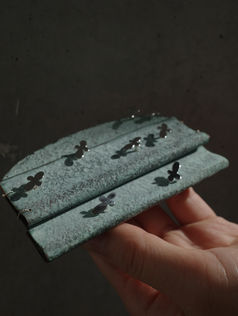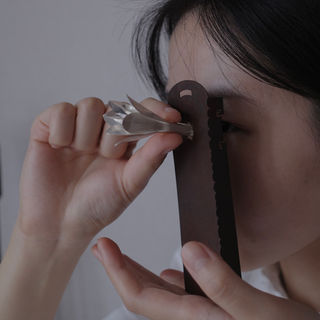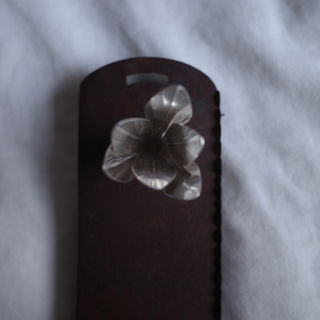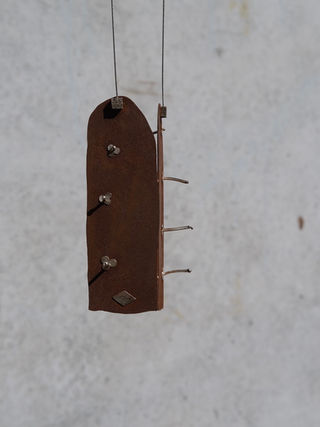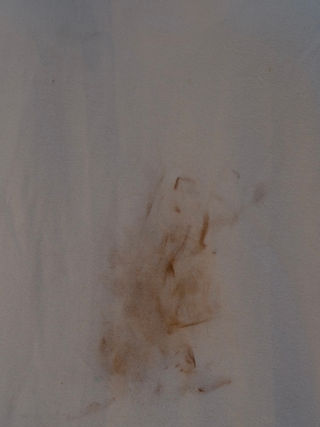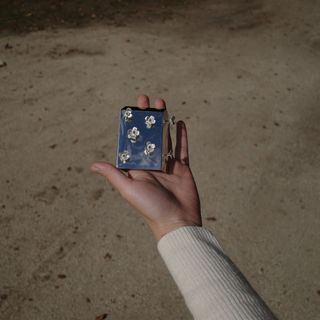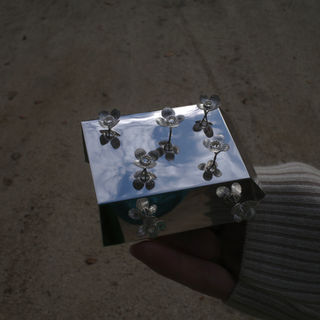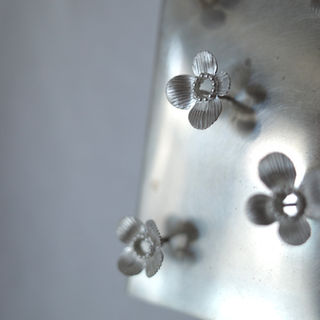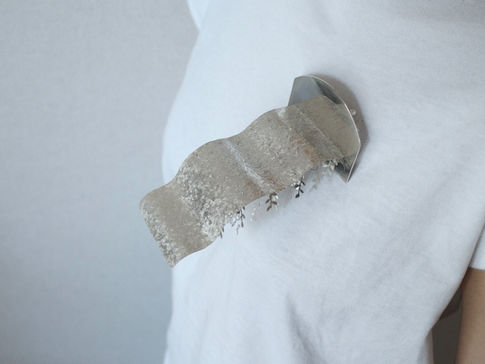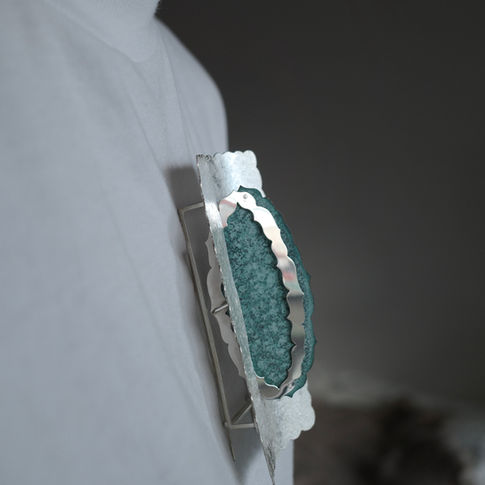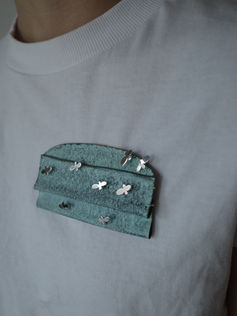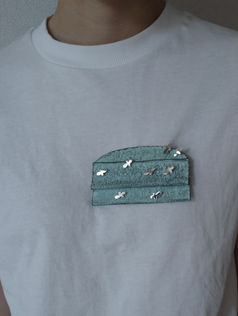2022
Coronaism
Based on my experience of quarantine in Tianjin, China, in 2021, the works are symbolically represent the door of a quarantine room through the use of iron. The cold, heavy material evokes the oppressive feeling of being confined in a dark space, reflecting the mental weight and gloom of isolation.
A white flower pierces through the iron plate, symbolizing “light, hope, and a longing for life.” Through the flower, one can glimpse the outside world, echoing the way I used to peer through the peephole of the quarantine door, catching fragments of the world beyond. This perspective and visual memory are recreated in the work.
The rust left on the hands or clothes after wearing the piece is intentional—an integral part of the work that makes use of iron’s natural properties. It represents the lingering emotional residue and scars of that difficult time.
Through the contrast between the white silver flower and the industrial iron structure, the piece conveys the tension and reflection on life and death that I experienced during quarantine.
2021中国の天津で隔離期間の経験が基になっている。「Coronaism I」「Coronaism II」は、隔離部屋の扉を鉄という素材で象徴し、暗い部屋に閉じ込めらる暗鬱な気持ちを表現している。白い花が鉄の板を突き抜け、「光・希望・生への憧れ」を表し、白い花の部分からは外の景色を伺い見ることができ、筆者が隔離期間中に扉の覗き穴から外を見る視線や、情景を再現している。
着用後に手や服に残る鉄の錆は、鉄錆の特性を活かした作品の一部である。当時の苦しい感情と記憶の残留を表現している。隔離時の経験での生と死に対する想いを、白い銀の花と鉄の人工物との対比で表現した。



2022
The other side
供花から取った自然の要素と墓碑から取った形を組み合わせ、死を象徴する形から花が咲いている様を表現をし、生と死は切り離せない関係であることを示した。
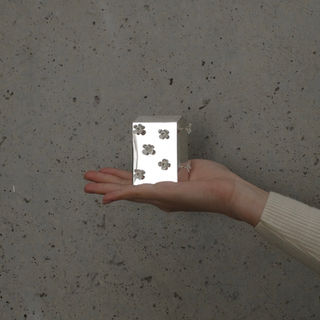
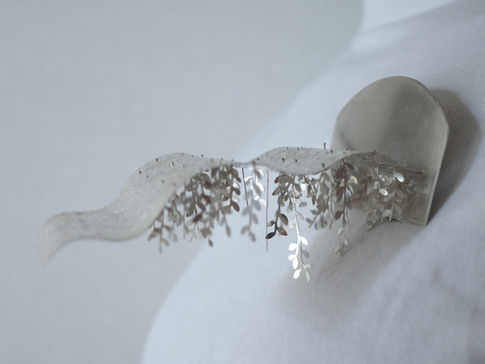
2022
The green in life
銅は空気中の水、二酸化炭素、酸素と反応し、自然な錆、すなわち緑青を形成する。一見、苔の生い茂る美しい緑に覆われ、生き生きとした植物のように見せているが、実際その緑は、酸化と腐食によって生じた「錆」である。視覚的な生き生きとした美しさ(=生)、そこに隠された退廃した物質(=死)の対比で、完成した作品の印象とその作品の持つ意味にギャップを含ませている。
